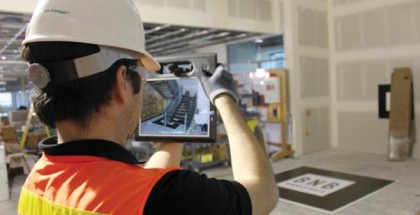Envisioning an Integrated Device World
Latest posts by Ilya Gelfenbeyn (see all)
- Envisioning an Integrated Device World - July 16, 2013
- Why Underdogs Are Winning the Mobile App Game - June 24, 2013
When I think about all the ways my smartphone helps me to meet up with friends—through voice, text, email, and a variety of friend-connectivity apps—I often find myself reflecting that mobile devices have been a terrific boon for my social life.
When I actually meet up with the friends that my phone has helped me find, however, I sometimes come to the opposite conclusion. I can’t count how many times I’ve ended up sitting at a bar booth, idly crunching beer nuts as I wait for my buddies to stop playing with their phones (and yes, often I’m the one playing with my phone while they crunch beer nuts). Far too frequently, the very thing that brought us together prevents us from having a meaningful interaction.
I know I’m not the only one bothered by device rudeness. I’m sure you’ve had similar experiences with your friends, assuming you weren’t too distracted by your own device to notice that everyone else was immersed in theirs. This state of things has driven some to extreme measures, like requiring everyone to leave their phones at the door before entering a party. Others have just given up and resigned themselves to a life of interrupted conversations.
I am not among the people who despair about a future in which our devices constantly butt into our social interactions, however. That’s because I see device distraction as merely one phase—albeit an annoying one—in the evolution of our technology. To me, that evolution seems to be pointing toward a world of technological integration, with tech assimilating to our physical environment and social fabric rather than rupturing it.
Many of the advances toward integrated devices are being made in the form of technologies that interact with human voice and touch. Technologies that project touch screens onto the physical environment so that we don’t have to carry our own personal devices everywhere we go are already in development, and applications of voice recognition technology are emerging that would embed that technology into everyday objects, even entire environments. Personal assistants tuned to your voice have already made their way into the consoles of cars, and they could be in the home before long, as well. Instead of fiddling with appliances, air-conditioning systems, and light switches, we will be able to direct the environment around us via voice command.
These new integrated device technologies would not be merely reactive—they’d take the initiative, as well—predicting your preferences based on prior interactions, accessing your calendar, and email to remind you of meetings, etc. They would be much more like another person in the room and much less like a separate world for you to disappear into.
The implications for our social interactions are vast. Instead of serving as a break from the conversation, our technologies will become part of the conversation—available for everyone to see and interact with at once. We won’t have to worry about being pulled out of conversations by our devices, because they will seem like a natural part of the fabric of those conversations.

















Submit a Comment